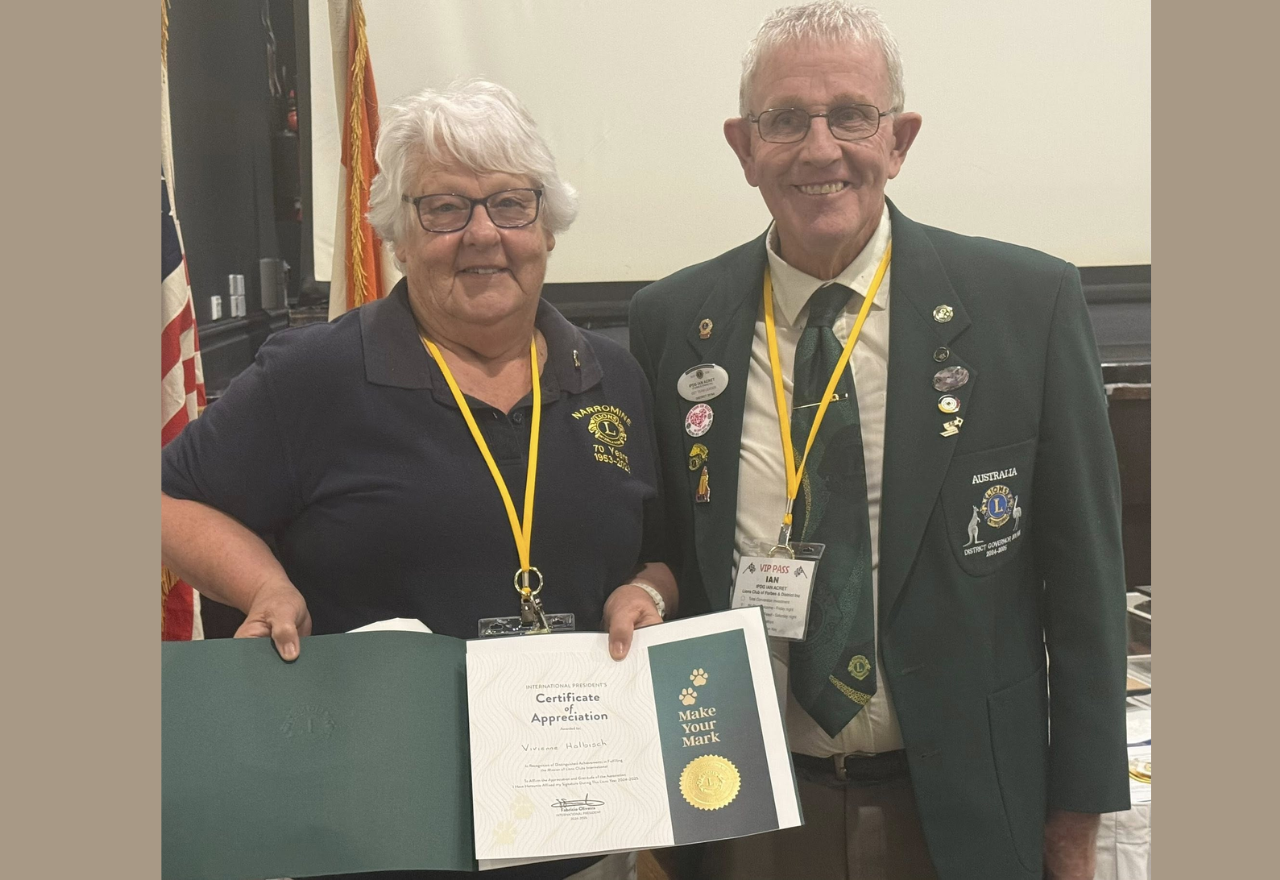Stats say get kids back to swimming lessons to save a life
Angie White
05 November 2025, 1:40 AM
 Nyngan Swimming Club Coach Jenny Griffiths says more kids need lessons [Image Nyngan Swimming Club]
Nyngan Swimming Club Coach Jenny Griffiths says more kids need lessons [Image Nyngan Swimming Club]The latest Royal Life Saving Australia (RLSA) research shows that the risk of drowning rises sharply for teenagers, between the ages of 10 and 20 years, a massive 1300% or thirteen times (13x).
RLSA is encouraging parents to consider more swimming lessons for 8,9,10-year-olds prior to entering high school.
Renewing the focus on learn-to-swim programs in the early years could be the key to turning the stats around and keeping young people safe.
Locals say both parents and councils have a role to play.
“Swimming and water safety lessons may keep children safe as they head into teenage and young adult years, when drowning increases thirteen-fold,” says RLSA.
New data shows that drowning in 15 to 20-year-olds has increased by 34% in the five years since 2021, compared to the five years before the COVID-19 pandemic. A figure causing concern.
According to RLSA over 10 million swimming lessons were missed due to the pandemic, and these children are now teenagers, who now can’t swim, so swimming at beaches and in rivers could cause significant danger without the skills to support these environments.
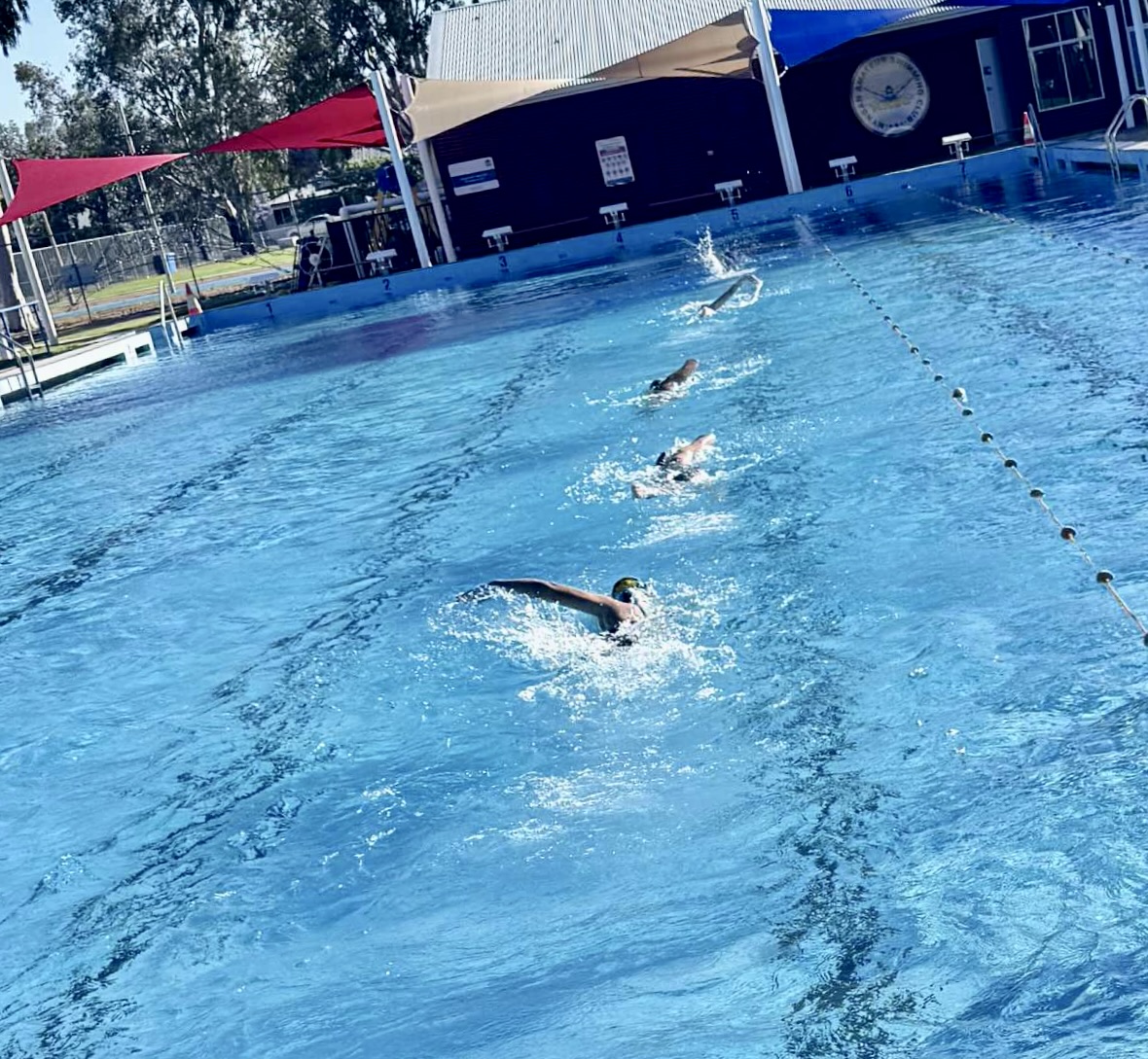
Nyngan Kids at Squad training Nyngan Pool - [Image Nyngan Swimming Club]
“We have seen a massive drop off in the number of kids that can swim 50 metres,” said Jenny Griffiths Nyngan Swimming Club coach and lifetime supporter.
“I see less and less children at the school carnivals each year. Learning to swim is an important life skill and a lifesaving one too.
“Take your little kids to the pool, join your local swim club and see what lessons are available, it may just save your child’s life,” said Mrs Griffiths.
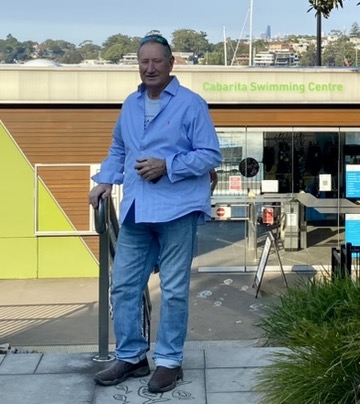
Peter Shanahan of Cobar at Cabarita Swimming Centre where he learnt to swim over 65 years ago - [Image D. Shanahan}
Peter Shanahan has been a swimmer his whole life and managed Cobar Swimming pool complex along with wife Dianne for many years, but Mr Shanahan said it's not just COVID-19 which has caused these problems but years of systemic decline.
“In 1970 we had around 1200 people a day coming through to go swimming, and in the seventies and eighties around one hundred and twenty thousand people at the pool each season.
"Nowadays if you drive past the pool, you may see ten cars there.
“In 2009 we were putting sixty thousand people through in a year but in 2010 that went down to forty thousand and has been on a gradual fall ever since.
“Unfortunately, Councils have allowed pools to decline over the years, the cleanliness and the care for the lawns and surrounding gardens is not like it used to be.
“Kids out here, lots of parents work shift work in the mines and are too tired or don’t have the time to take kids to the pool after they have worked a twelve-hour shift.
“In the seventies kids came to the pool early in the morning and stayed all day.
"They usually had no parents with them, so they had to learn quick smart how to swim, how to cope with being dived on by other kids and how to keep themselves safe.
“We made sure as pool managers to seek out the kids who couldn’t swim and get them going, the older kids were great, they helped the little ones, some as young as five, who learnt to swim like fish with everyone’s help.
“Overweight kids and adults don’t feel comfortable coming to the pool in case they are teased or laughed at, and this means these kids don’t get swim training.
“It is not just the pool that has seen a decline, it is all sports and sporting facilities in the town. Phones, computers, TV, have all taken the place of exercise and we have become an inactive nation.
“Whether it is a lack of parental guidance or not I am not sure, the Royal Life Saving Society has a right to be worried with these alarming new statistics.
“These drownings are all very preventable with lessons and exposure to swimming experiences. Confidence is everything so work on making your child confident around water.
"Swimming has so much to teach kids, its a vital skill to have," said Mr Shanahan.
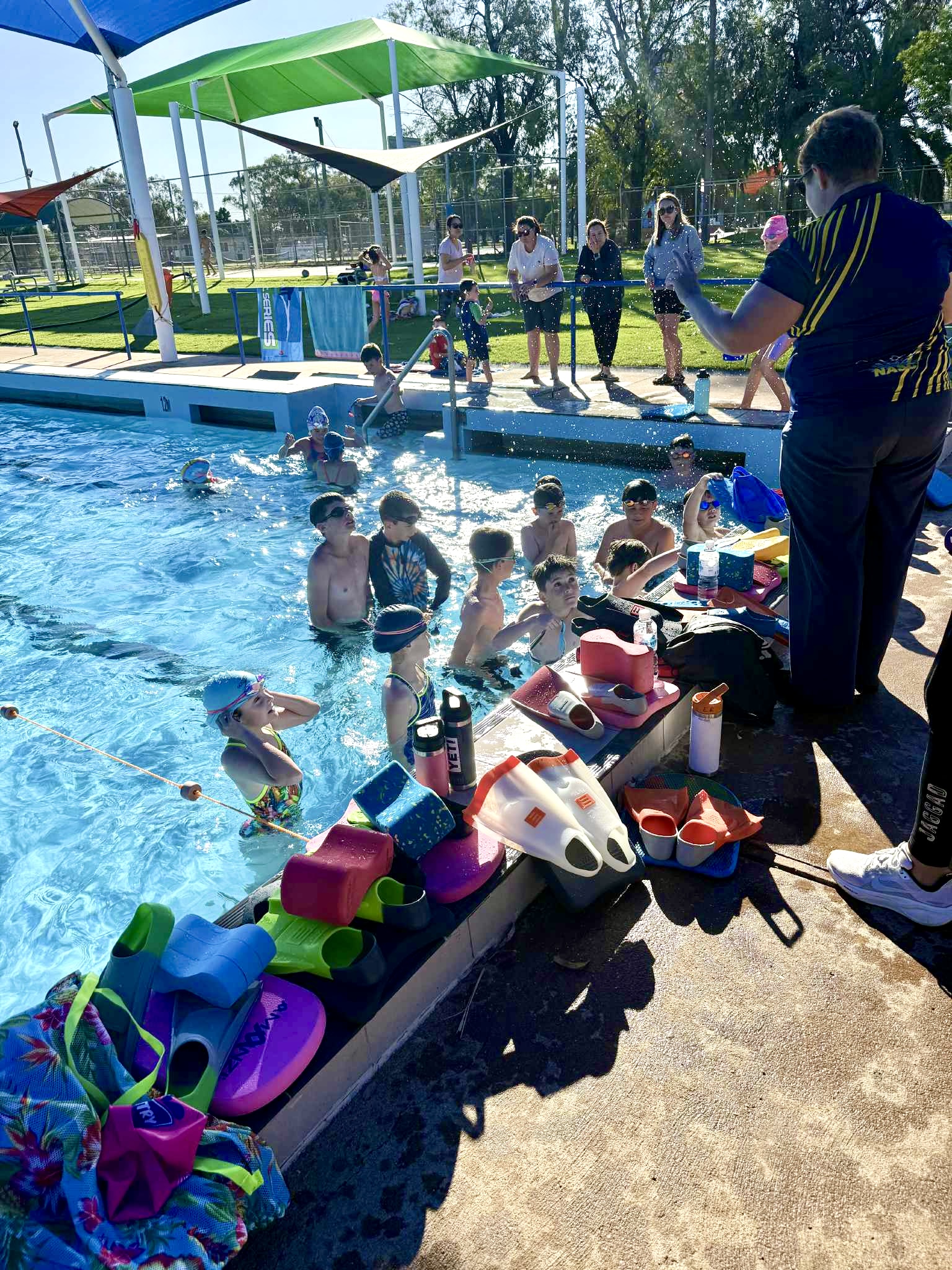
Nyngan kids gathered with coach Jenny Griffiths at Nyngan Pool - [Image Nyngan Swimming Club]
Johanna Lane, mother of three and Nyngan Swimming Club committee member said the importance of learning life skills that come with swimming are endless.
“Skills that come with swimming regardless of if it is in a pool, dam or river or any body of water are vital.
“Too many kids from outside of Australia (and inside Australia as well) who come to our pools and waterways who have drowned or almost drowned is insane.
“Parents today don’t realise the importance of these life skills; it’s going to come to a point where our kids out west won’t be able to have a swimming carnival as many of the kids can’t swim and the child to teacher ratio is not enough to cover those who cannot swim.
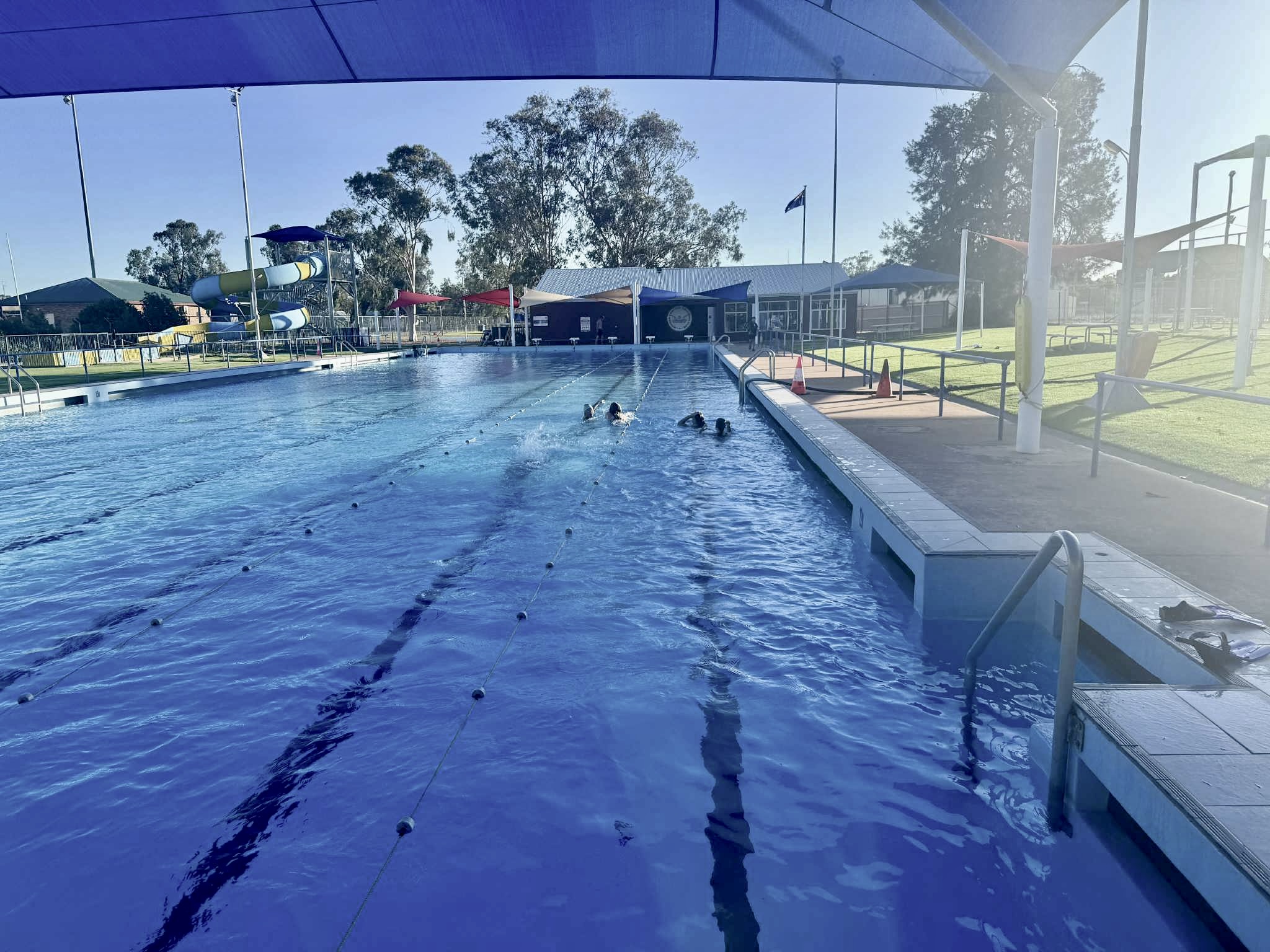
Kids hard at work at Nyngan Pool [Image Nyngan Swimming Club]
“If your children quit lessons before 7, a second dose of swimming at age 10 or before is a lifesaving idea. Whether to build confident swimmers, encourage them into sport and recreational activities, and to prevent drowning later in life, swimming is for life, and no child should miss out,” Royal Life Saving Chief Executive Officer Dr Justin Scarr.
If your child is unable to complete this checklist, it may be time to head back to the pool.
- Can your 10-year-old swim 50 metres and float for two minutes?
- If they fell from a boat or slipped off rocks, could they float and/or swim 50-100m to safety?
- If peer pressure meant they jumped from a jetty or rocks, could they then swim to safety?
- If they were caught in a river current, would they know what to do?
Royal Life Saving says there are a few ways to help.
- Try contacting your nearest swim school and enrolling in lessons or holiday courses.
- Spend more time at the local pool to boost confidence.
- Join a swimming or lifesaving club or try water sports like water polo or learning to surf.

